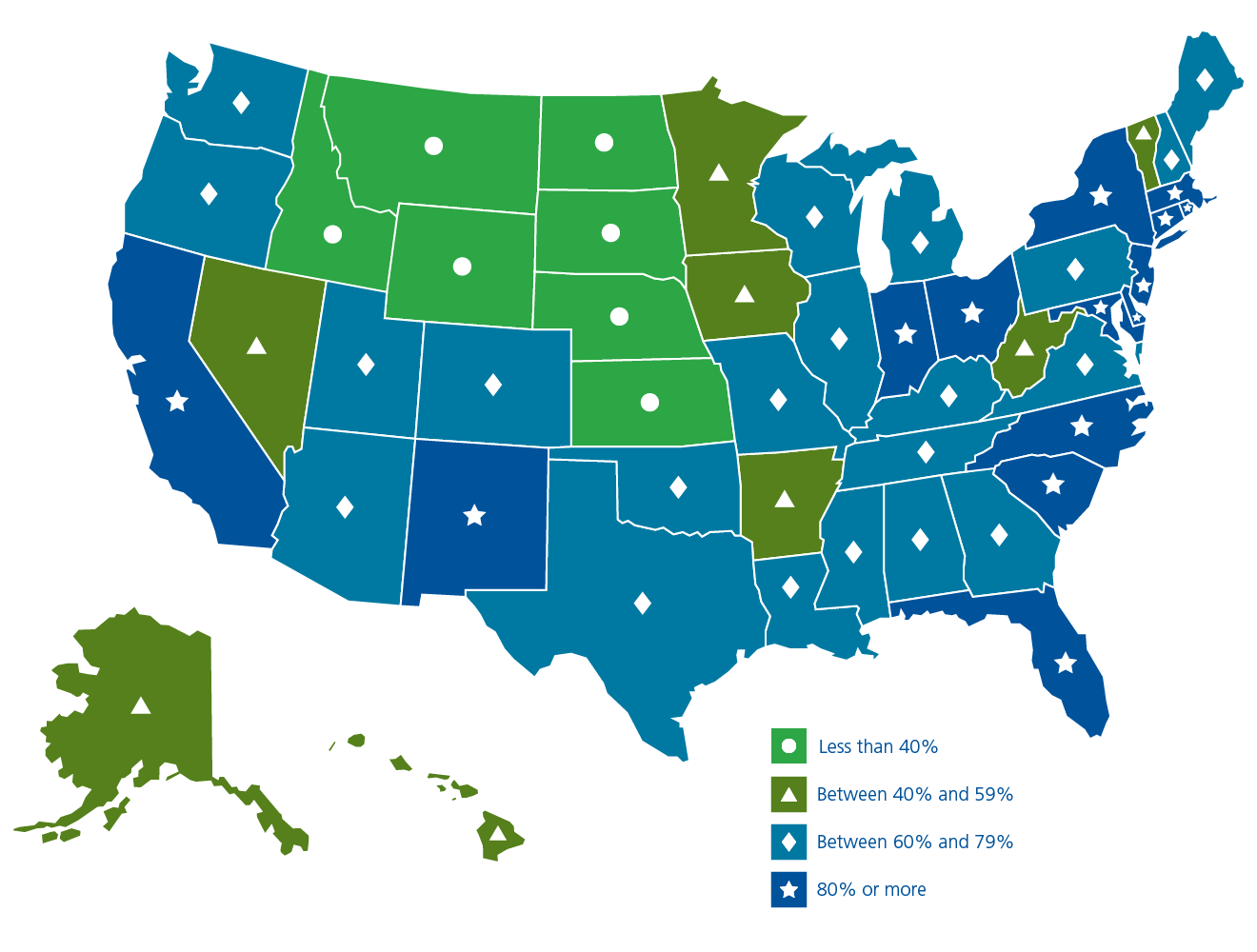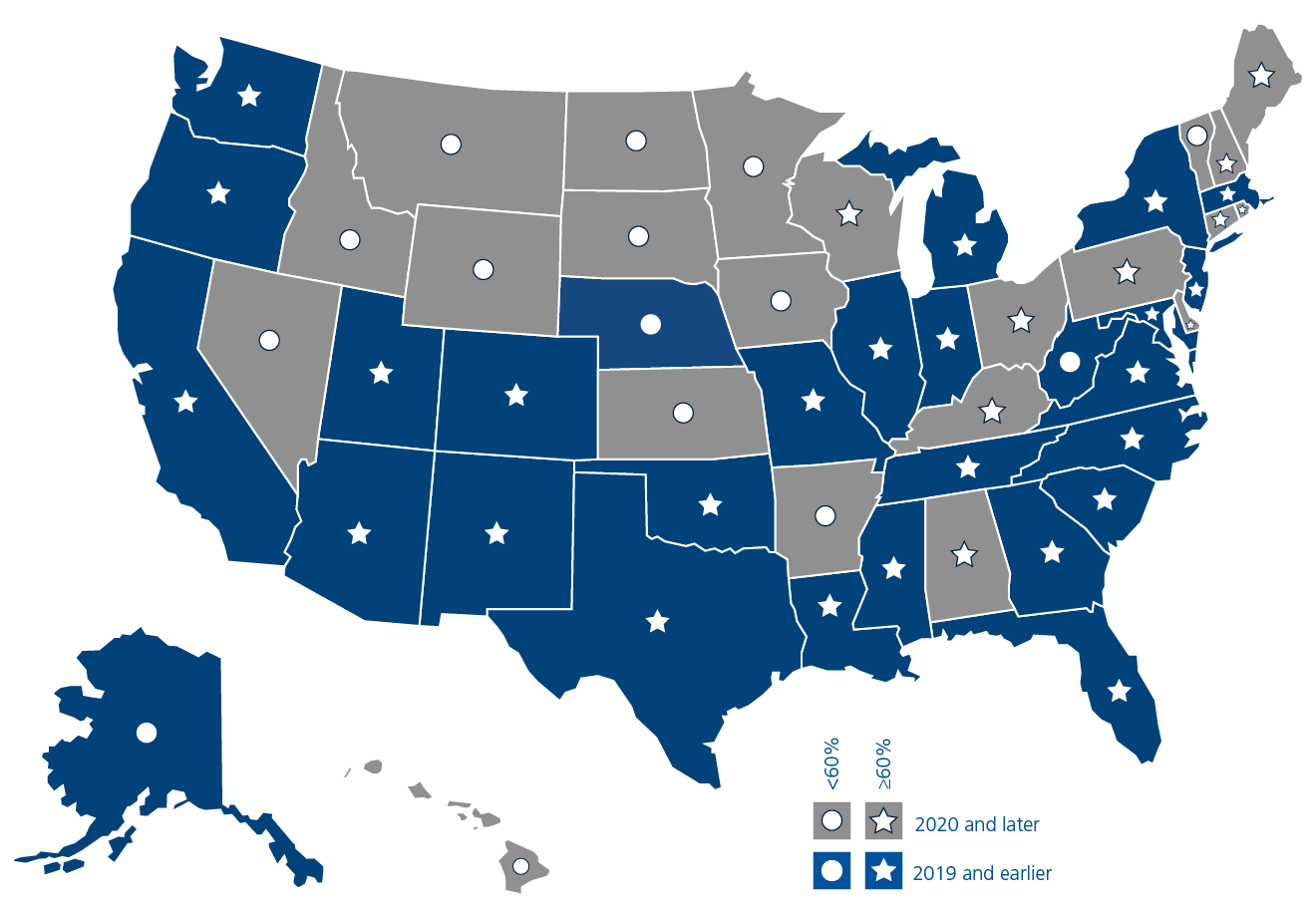Preventable maternal mortality in the U.S. has grown considerably and spurred the federal government into action. Growing rates of maternal mortality and morbidity adversely affecting certain communities accentuate this crisis.
CMS Birthing-Friendly Designation
As part of ongoing efforts to improve maternal health, the Centers for Medicare & Medicaid Services (CMS) has begun to assign a “birthing-friendly” designation to identify facilities that participate in a state or national perinatal quality improvement collaborative and implement patient safety practices or bundles as part of these initiatives. By designating hospitals as birthing-friendly and, through this, signaling the consistent use of evidence-based practices in maternal care, CMS hopes to increase and further ensure access to high-quality perinatal services and help expectant parents find the quality care they want and deserve.
Access to High-Quality Maternal Care Varies Widely
Recent analysis of CMS birthing-friendly designation data by Westat finds the proportion of facilities within a state that CMS currently designates as birthing-friendly varies considerably. Sixteen states currently have more than 80% of their birthing facilities designated as birthing-friendly while 6 have fewer than 40%. States where birthing-friendly designated facilities reach more than 80% are primarily located in the eastern portion of the country with California and New Mexico being exceptions. States with fewer than 40% of facilities designated as birthing-friendly are in the Midwest and Northwest and have high concentrations of rural counties. These counties are more likely to be “maternity care deserts,” characterized by a scarcity of maternity care resources and, consequently, uneven access to high-quality maternity care. Most states can boast that at least half their facilities are designated as birthing-friendly. See Figure 1.

Transforming Care with Best Practices
Through the recently announced Transforming Maternal Health (TMaH) Model, CMS hopes to encourage greater use of maternal care quality improvement/patient safety bundles and other established best practices. Patient safety bundles are well-established and are one approach supported by the Alliance for Innovation on Maternal Health (AIM), in which nearly all states participate. The association between the proportion of birthing-friendly designated hospitals and states’ initial AIM participation is one indication that CMS’s objectives for TMaH are a step forward. The earlier that states began in AIM, the more likely they are to have at least 60% of hospitals designated as birthing-friendly. Specifically, among states that initiated AIM participation in 2019 or earlier, 89% have at least 60% of their facilities designated as birthing-friendly while only half of states that began AIM in 2020 or later can make the same claim. See Figure 2.

Variation in the proportion of facilities designated as birthing-friendly across the country underscores the stark differences in access to perinatal care. Hospitals in several states with high concentrations of rural areas are much less likely to be designated as birthing-friendly, leaving fewer high-quality options for residents there. The anticipated TMaH Model can support hospitals that seek to achieve this designation to catalyze improved maternity care. In advance of TMaH, CMS may consider prioritizing outreach to states that lack established programs or resources to implement patient safety bundles and require the most support, and identify lessons learned from states with high proportions of birthing-friendly facilities.
Submitted by Dominick Esposito, PhD, a Vice President for Behavioral Health and Health Policy. Hollie Harsanyi, MPH, a Senior Research Associate for Social Policy and Economics Research, developed the maps presented here.
-
Expert Interview
Can an Open-Source Platform Transform Public Health Reporting and Modernize Medicine?June 2025
Healthcare providers and facilities in the U.S. are required by law to report many infectious disease cases as they occur for the public’s protection, but…
-
Expert Interview
Applying Infectious Disease Research Infrastructure to Chronic Disease PreventionJune 2025
Westat has coordinated a nationwide virtual research network of healthcare systems and research organizations that delivers relevant patient data to support research on respiratory disease…
-
Expert Interview
Improving Student Success Through Innovation and ResearchJune 2025
How do you turn innovative ideas into real, measurable improvements for students? One of the major tools available to support these efforts is the Education…

